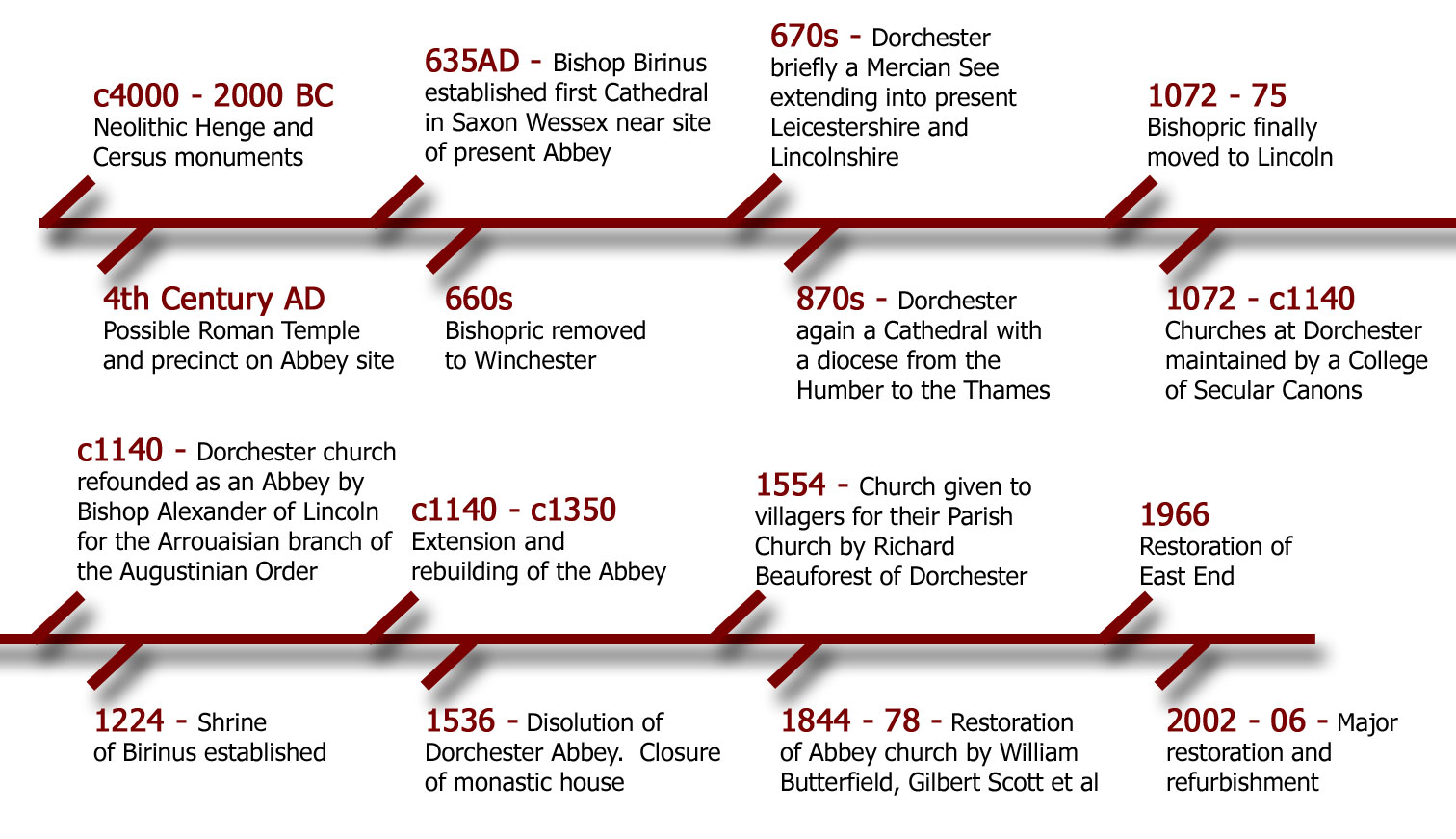Abbey History
Nearly 1400 years of Christianity
The Iron Age fort on Wittenham Clumps dominates a landscape settled since remotest antiquity. To the south, in the Berkshire Downs, is Churn Nob, and here, in 635AD the missionary Bishop Birinus, sent from Rome by Pope Honorius I, preached to Cynegils, King of Wessex. To the north, enclosed between the River Thames and its tributary the River Thame, lies Dorchester, a small village with a great Abbey, a cradle of English Christianity. The building we now see was begun in the 12th century, replacing two earlier Saxon cathedrals (some Saxon fabric is still evident in the north wall of the nave). The Norman building expanded in the 13th century and was richly aggrandised in the early 14th century when the chancel was added with its wonderful window sculpted with the Tree of Jesse, its stained glass and its exquisite sedilia. The great tower, rebuilt in 1602, but incorporating a 14th century spiral staircase, rises above a lush landscape of willows and flowering water meadows. On this site, perhaps in the Thame itself, Birinus baptised King Cynegils, with Oswald King of Northumbria standing godfather.


